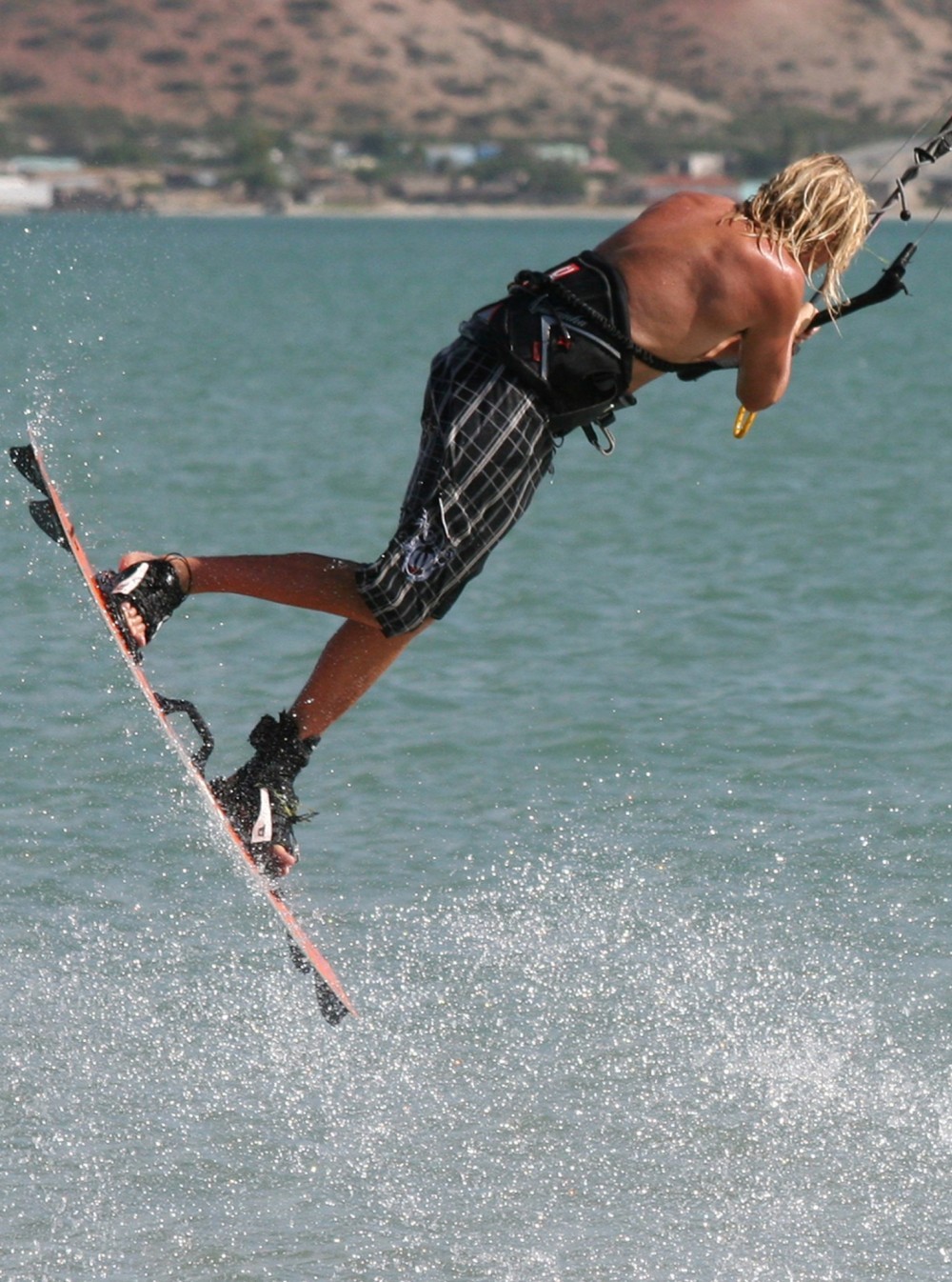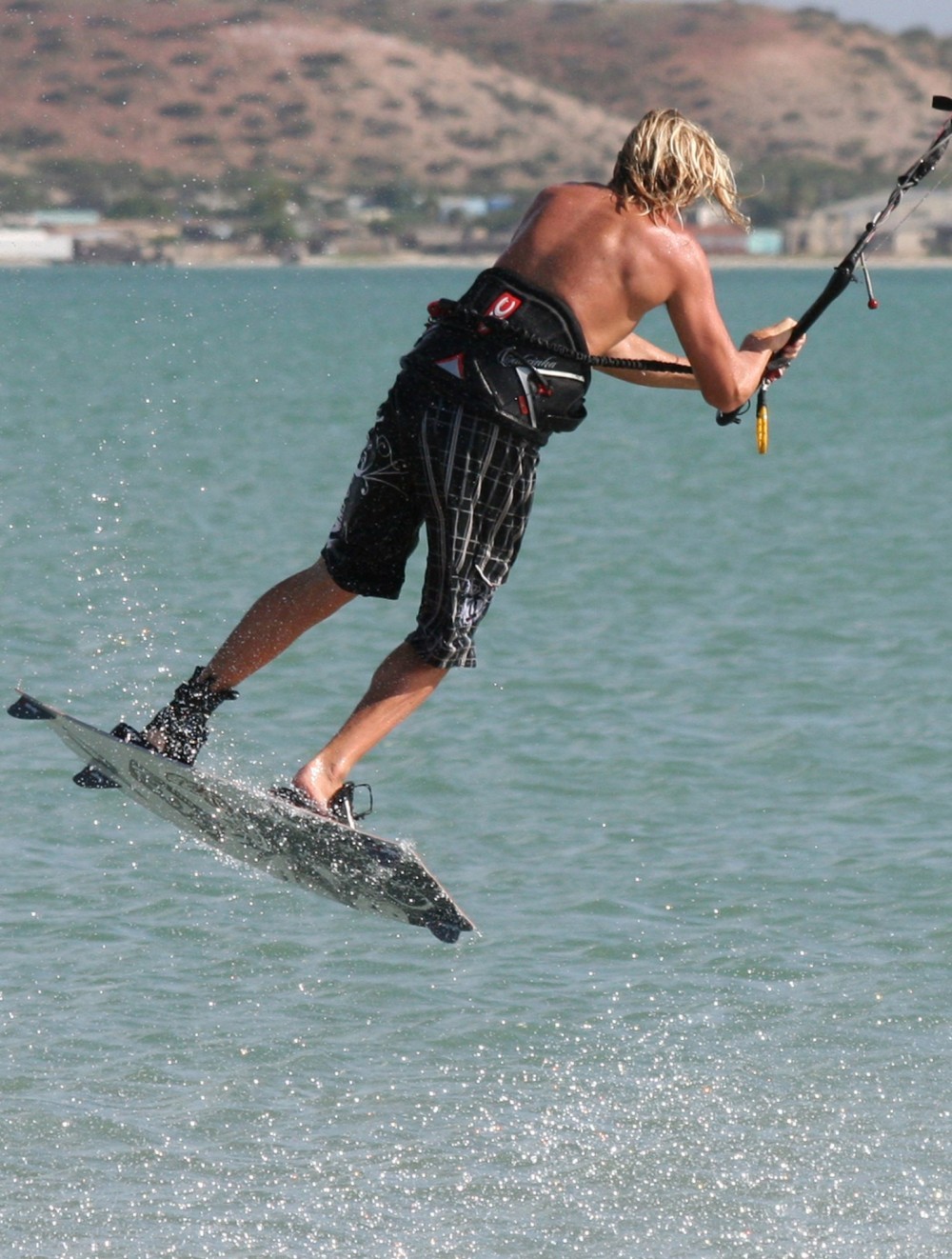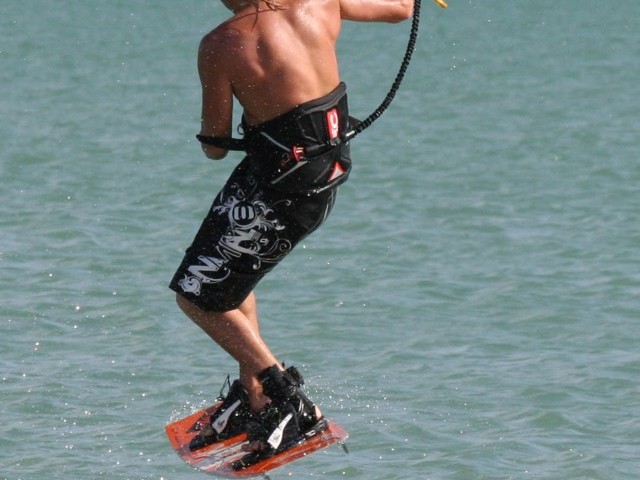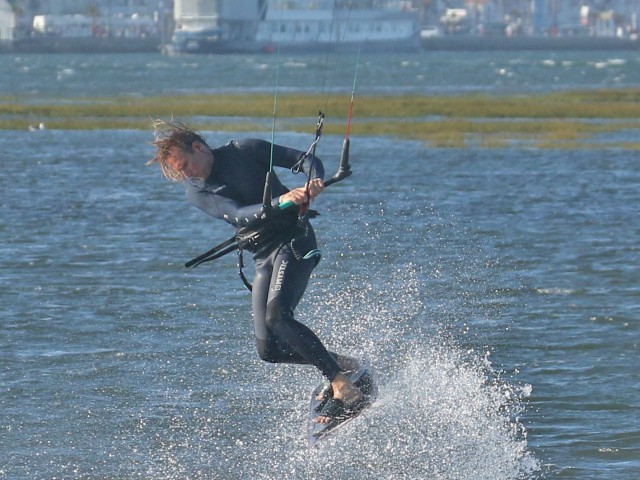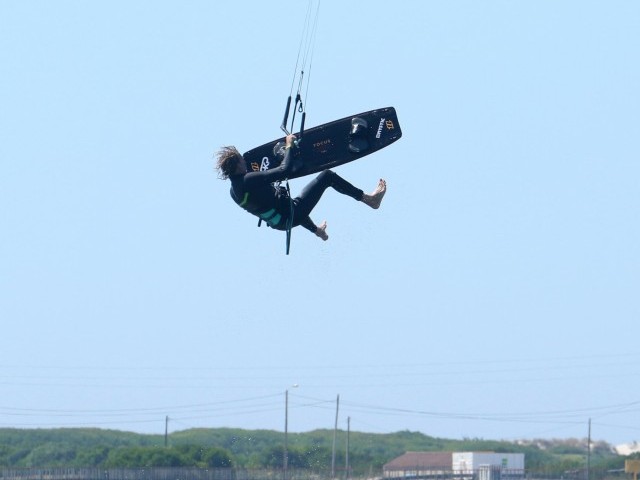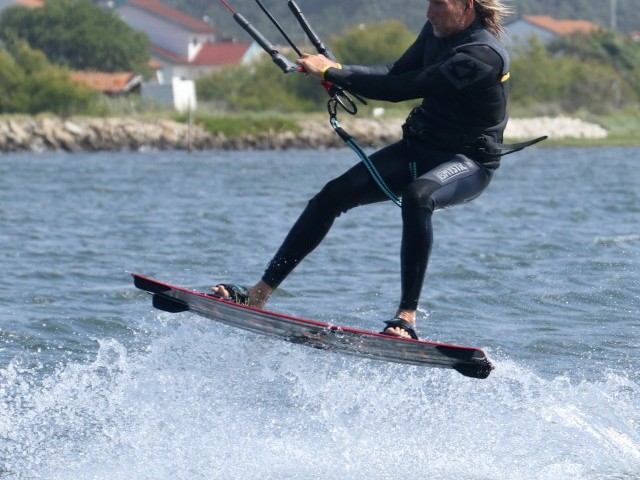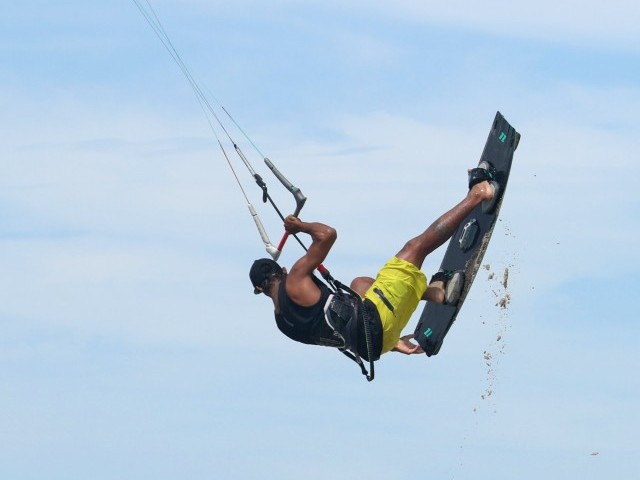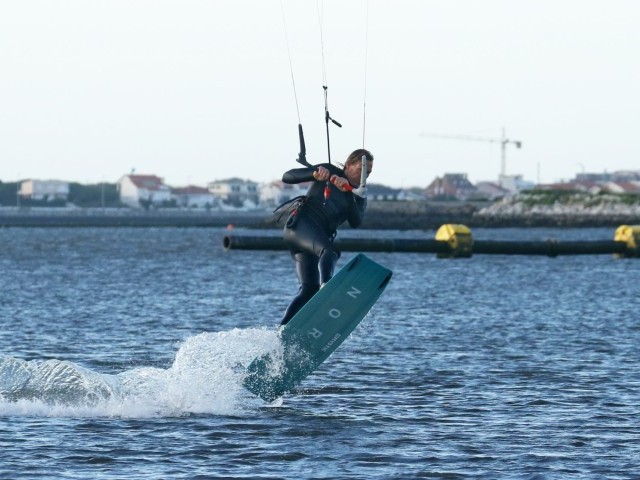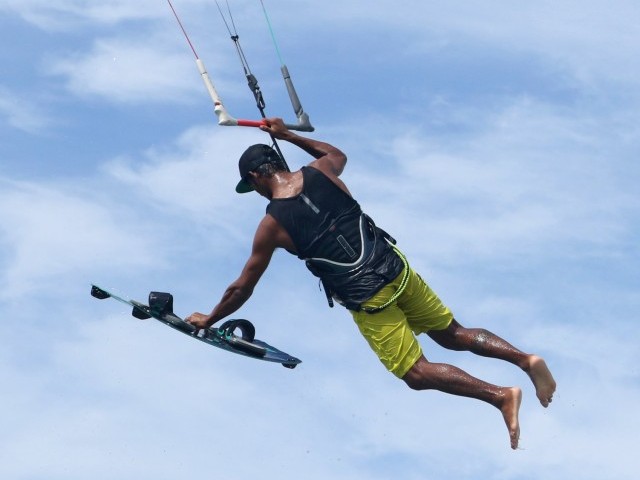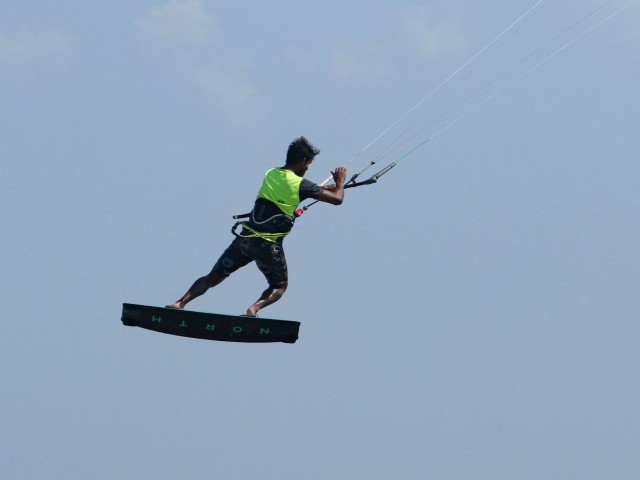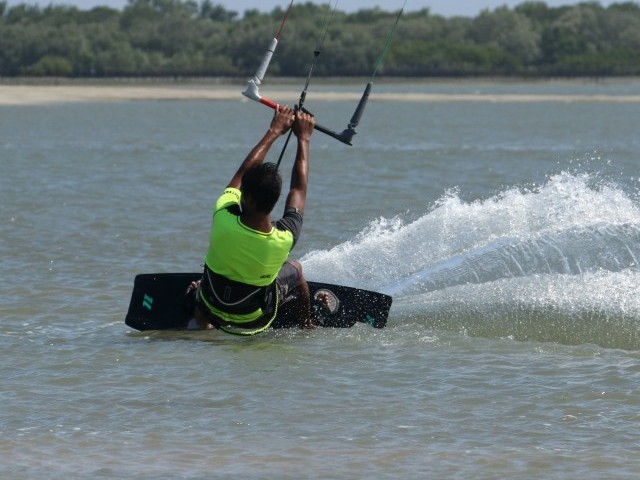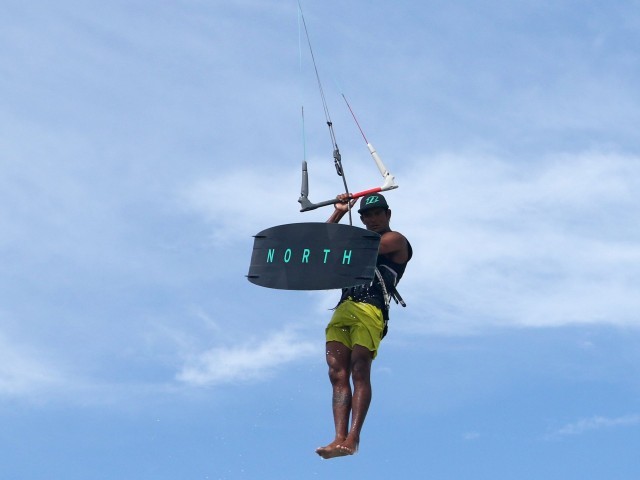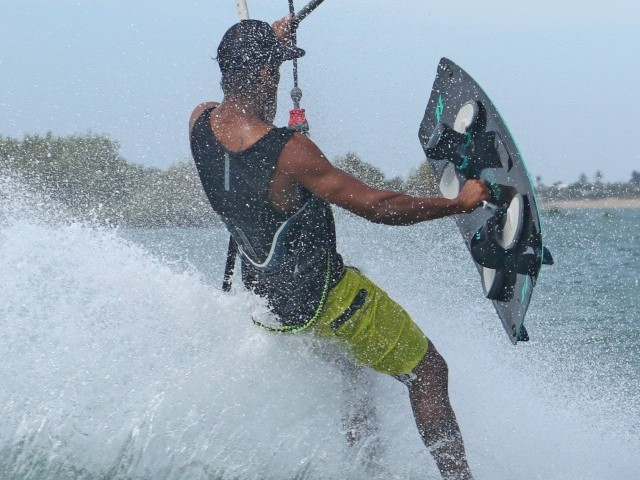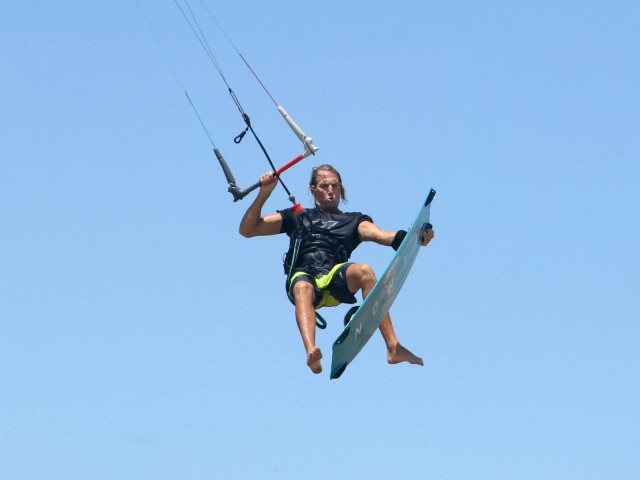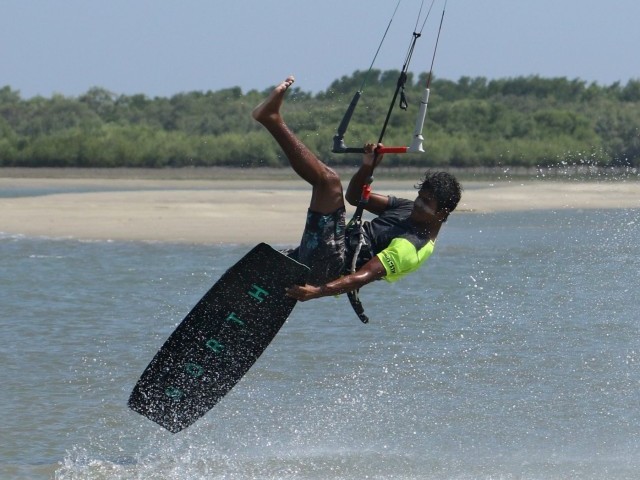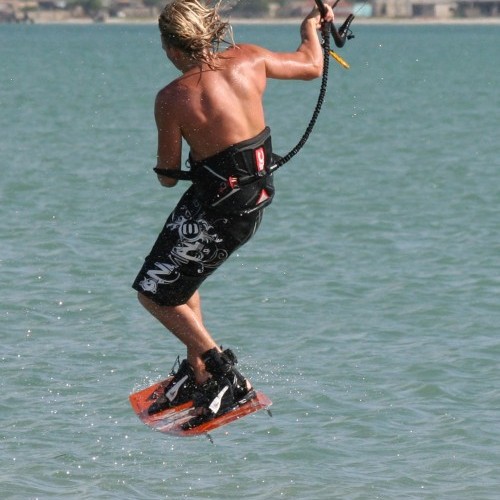
Shifty to Wrapped
Technique / Advanced
Introduction
This is a cracking move, which looks phenomenal, feels amazing and is actually relatively easy to nail consistently once you’ve got it. For us 2009 has been shift-tastic, loads of the BKSA youth elite squad have been adding these to their armouries in coaching, as have a few of our more senior guests on clinics. If you have a look at the Videos you can see Christian, Karine and Cabrinha Youth rider Dan Sweeney all banging them out.
What on Earth is Wrapped?
If you have not contemplated what landing wrapped is yet, try visualising this: you are about to land toeside but you continue rotating and turn the board so that you rotate another 180˚ to land heelside whilst releasing your front hand. You will in effect land with you back hand twisted up in a half nelson behind you.
If you can railey to blind, let’s say riding to the right. You pull the bar in and rotate anti-clockwise, whilst releasing your left hand, thus landing blind. Imagine doing the exact same rotation, anti-clockwise and releasing with the same left hand whist riding to the left, now you’ll be going to wrapped.
In Short if you can railey to blind on port tack, you should be able to shifty to wrapped on starboard. If you do it this way you’ll need your leash hanging down to the right. If you try the shifty to wrapped riding to your right, hang your leash to the left.
Dropping into it
If you’ve been going at the Shifty you probably have noticed that more often than not, the board does have a desire to switch around to toeside as it drops down. If you’ve been trying them on your weaker landing side, the board has probably won and you’ve been riding out toeside. This is very good news.
Looking at Pic A we can see how Christian’s back foot, and therefore the back of the board, is higher than his front foot, and that his back foot is further upwind than his front foot. In fact for the shifty he has lifted this end of the board, whilst his extended front leg has pretty much left the nose of the board where it was.
Now without wanting to get overly scientific with Newton, apples and laws, let us all agree that what goes up must come down.
Now look at Pic B. As soon as Christian stops holding his shifty position gravity takes over. His back foot and the weight of the back of the board drop down, accelerating as they go, creating some highly useful momentum. Once again the static front leg, which is not falling, acts as a pivot point, so the back leg starts to swing around for a toeside landing.
Add to This Two Things
1. A hefty pull on the arms, bringing the bar down and in towards the back knee.
2. A physical kick forward and through with the back knee.
Pic C is the result. A tasty amount of rotation, which should easily get you around to wrapped.
The only thing left to do then is release your front hand, twist your wrist down and around and turn your head. Twisting the wrist so that your thumb points down and then back from whence you came will allow you to turn you shoulders further and should guarantee you getting far enough around. Don’t let go as your aim is to land wrapped and then pass out. Pic D, taken from in front shows this well. To help stop the kite drifting up Christian does this move with his hand centred on the bar, with the chicken loop line in between his first two fingers.
Keep Low
One final tip before we go through the sequence is to give the kite a hefty tweak down with your front hand as you pull in to get the rotation. The kite will want to rise as you’ll be left holding the bar with the back hand, so the only way to get this move smooth is to yank the kite down just before you spin. Once you get the timing right you’ll be able to pull the bar in hard but bias the front hand so that your pull steers the kite down.
Following Sequence 1
- Pic 1. As per usual Christian has come off the wind to unhook and set himself up for take off. He pushes the board out in front of him by extending his front leg, which gets his weight over the back foot. The more off the wind he goes the less likely he is to carve to far up into wind and get a raley take off.
- Pic 2. Christian gets back onto his edge by dropping his weight to upwind and carves the board against the pull of the kite.
- Pic 3. With his weight over his back foot Christian allows himself to be pulled up and explodes off his back foot. Immediately he leans his head over his back arm and keeps his front leg extended. Because the kite is not too high his arms don’t get pulled up over his head.
- Pic 4. As the board leaves the water Christian keeps his front leg locked and starts to swing his back leg upwind.
- Pic 5. With the board pivoting around his front leg, Christian keeps his weight forward, holding the nose of the board down, and lifts his back foot up towards his backside.
- Pics 6 & 7. Once Christian feels that he’s on the way down he releases his hold of the shifty and lets the board swing down. At the same time he pulls the bar in towards his back knee as savagely hard as possible, and kicks his back knee towards the bar. This gets the rotation to wrapped underway.
Have a look at Sequence 2, also from right to left, which shows the same from behind. In the last shot you can see Christian has already released and is twisting his wrist, turning his shoulders and spinning around quite merrily.
The Landing and Pass - Sequence 3
- Pic 1. Having pulled the bar towards his knee and kicked his knee towards the bar Christian is spinning fairly rapidly. As he turns he already twists his wrist to get the bar ready, which also allows him to turn his shoulders further. His head is turning to look where he is going and his right knee is still driving around.
- Pic 2. Having turned Christian’s main aim is to land on a flattish board and hold onto the bar. To do this he has rotated around and got his hips centred between his feet. This will give him a stable platform to land on and give him the balance to pass the bar. You can also see that his palm has turned all the way up. This means that the bar is ready and waiting for the other hand, and it also stops the shoulder getting pulled.
- Pic 3. With the bar twisted and waiting in place, Christian reaches up with his other hand and grabs the bar from underneath with his free hand, palm up. He also starts to stand tall.
- Pic 4. Now that he is upright Christian releases the bar and cunningly gets out of the wrapped arm lock. For extra style points you could ride for a few metres wrapped before passing the bar!
- Pics 5 & 6. Once he’s let go Christian turns his head and looks where he’s going, reaches forward to get two hands back on the bar and can hook back in. Lovely job.
Common Problems
If you are not getting enough rotation and keep catching your heelside edge when you land. There are two possible causes of this.
Firstly if you are not actually getting into a shifty position, without the back knee up and behind you, you have not wound up for the spin, so it can be difficult to kick through with the knee and get enough inertia to take you around.
Secondly if you just try and spin to wrapped without pulling the bar in hard, you’ll find the kite and bar will pull away from you and you won’t have that moment of slack. As you get pulled you will stop rotating, ouch. This is because you body will stretch out. So give the bar a darn good tug before you spin.
If you find that you bounce out when landing. This invariably means that you have too much weight over the back foot when you land, so the tail digs in and corks you back up again. Makes for some great pictures. Try and turn your head as well as your shoulders to look around to where you are going. Also it is worth trying to get some weight on your toes when you land. If you lean back onto the bar too much, you’re likely to land on an edge, which never really works, so break at the waist to avoid this. It may not look quite so cool but it’ll help.
Keystones
- Front leg straight
- Back leg up and round
- Big effort, hands to knee, and knee to hands
- Twist your wrist and shoulders
- Land with weight slightly on toes
This technique article was in Issue 15 of IKSURFMAG.
Related
By Christian and Karine
Christian and Karine have been working together as a coaching team, running improver to advanced kitesurfing clinics since 2003.










